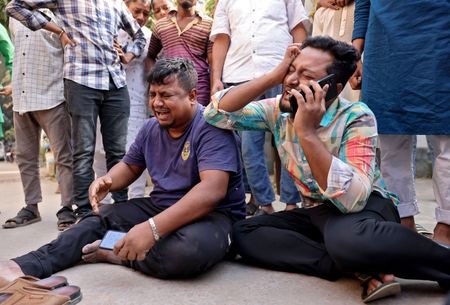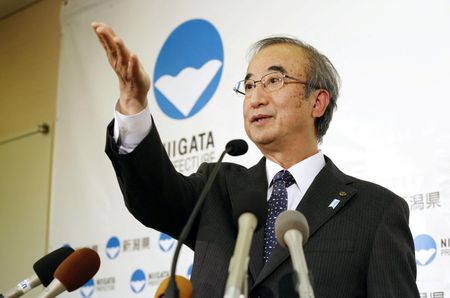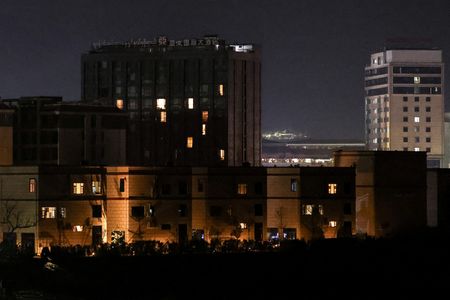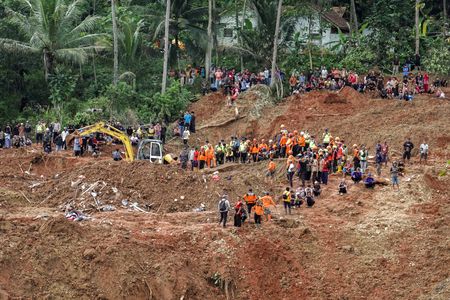By Tom Balmforth
KYIV (Reuters) -North Korean ballistic missiles fired at Ukraine by Russian forces since late December have been far more precise than salvos of the weapons launched over the past year, two senior Ukrainian sources told Reuters.
At a time when Moscow’s burgeoning ties with Pyongyang are causing alarm from Washington to Seoul, the increase in accuracy – to within 50-100m of the intended target – suggests North Korea is successfully using the battlefield to test its missile technology, the sources said.
A military source, who requested anonymity to discuss sensitive information, described a marked improvement in the precision in all the more than 20 North Korean ballistic missiles that hit Ukraine over the past several weeks. A second source, a senior government official familiar with the issue, confirmed the findings when asked by Reuters.
Yang Uk, a weapons expert at Seoul’s Asan Institute for Policy Studies, said such improvements in North Korean missile capabilities have troubling implications for its potential to threaten South Korea, Japan and the United States or sell upgraded weapons to “failed” states or armed groups.
“That can have a major impact on stability in the region and the world,” he said, in response to questions for this story.
North Korea’s military programmes have developed rapidly in recent years, including short- and intermediate-range missiles that Pyongyang says can be tipped with nuclear warheads. However, until its involvement in Ukraine, the long-isolated nation had never tested the new weapons in combat.
Ukraine’s defence ministry did not respond to requests for comment. Ukraine does not usually disclose the outcome of Russian missile and drone strikes on military targets.
The defence ministries in Russia and South Korea, as well as South Korea’s National Intelligence Service, did not respond to Reuters questions.
The North Korean embassy in London did not answer calls seeking comment or respond to a voicemail. The country’s mission at the U.N. did not respond to questions. North Korea and Russia have denied any arms deals though their leaders pledged closer military cooperation when they met in September in Russia’s far east.
The U.S. Pentagon and U.S. Office of the Director of National Intelligence declined to comment.
‘CUSTOMER FEEDBACK’
Military expert Yang said his security contacts in Ukraine had also independently reported improvements in the latest batches of North Korean missiles.
“As they are making missiles and getting feedback from the customers – the Russian army – then they have more experience making more reliable missiles,” he said.
The sources and Yang said it was not clear what modifications North Korea had made.
The military source said forensic analysis conducted on debris had not identified changes to the design of the missiles, although there had been very little debris left to analyse.
Two possible explanations were the missiles being fitted with better navigation systems or with a steering mechanism to help manoeuvring, the source said.
According to Yang, other factors that could improve accuracy include better targeting information for crews, new guidance system components provided by Russia and improvements based on the data and experience North Korean scientists have gathered in the war.
Earlier in the war, the missiles had an accuracy of 1-3 kilometres, but the most recent had an accuracy of between 50 and 100 metres, the military source said in an interview in Kyiv on Jan. 27, disclosing a previously unreported assessment for the first time.
The source declined to publicly disclose what had been targeted, where the missiles were fired from or the dates of the attacks, citing military secrecy.
Russia began firing North Korean K-23, K-23A and K-24 short-range ballistic missiles at Ukraine towards the end of 2023 and has since fired around 100, the source said. Kyiv says Russia has also received millions of artillery shells and thousands of troops from Pyongyang to help its war effort.
North Korea is expanding a complex that manufactures K-23 missiles, Reuters reported in November.
In February 2024, Ukraine’s top prosecutor cast doubt on the reliability of North Korea’s little-known weaponry, saying that only two out of 24 missiles that had been fired up to that point had been “relatively accurate.”
The advance in the weapons’ precision appeared suddenly, the source said, after months of inaccurate launches. The new assessment was based on where the missiles – identified as North Korean through examinations at blast sites – fell in relation to the presumed target in the vicinity, the source said.
Reuters could not independently verify the sources’ assessment.
BIGGER PAYLOAD
Though North Korean ballistic missiles account for only a small portion of Russia’s missile strikes they carry a large warhead of up to one tonne and have a range of up to 800 km, the military source said. The Iskander-M, an equivalent Russian missile, carries a smaller payload and has a shorter range of 500 km.
Moscow and Pyongyang have rapidly grown closer since 2023 when Russia’s then-defence minister visited North Korea. The two powers signed a treaty on “Comprehensive Strategic Partnership” last year.
When then-U.S. Secretary of State Antony Blinken visited Seoul in November, he warned that Pyongyang’s deepening ties with Moscow were a threat to global non-proliferation regimes.
South Korea’s national security adviser Shin Won-sik said in November that Russia had provided North Korea with anti-air missiles and air defence equipment in return for troops and weapons supplies.
Moscow may also be assisting North Korea with missile parts and financial support, as well as space technology, South Korea’s intelligence agency has said.
“North Korea is getting something,” Yang said.
(Reporting by Tom Balmforth in Kyiv and Josh Smith in Seoul; Additional reporting by Jonathan Landay and Idrees Ali in Washington; editing by Mike Collett-White and Frank Jack Daniel)











